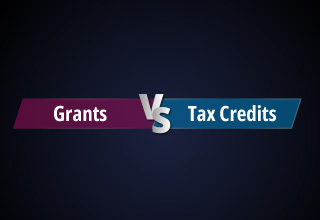What Startups Need to Know About R&D Tax Credits
 Turning an innovative idea into reality sees many startups initially running at a loss. Fortunately, losses in the early years from product or service development can be turned into cash or a Corporation Tax break with HMRC’s R&D tax credit scheme.
Turning an innovative idea into reality sees many startups initially running at a loss. Fortunately, losses in the early years from product or service development can be turned into cash or a Corporation Tax break with HMRC’s R&D tax credit scheme.
Many startups may have heard of R&D tax credits but are unsure if they relate to their business or how to apply. Jeff Drennan, a Managing Partner at Amplifi Solutions, helps to clarify the entire process.
R&D Tax Credits
Initially introduced in 2000 by the Government to encourage and reward R&D within limited companies and PLCs, R&D tax credits offer SMEs an additional tax reduction of 26p (up to 33p if you are surrendering a loss) for every qualifying pound spent on R&D.
“The government’s aim is to grow the economy through innovation,” says Jeff, “and they are prepared to compensate companies that help fulfil this aim.”
Qualifying R&D Projects
HMRC classifies R&D as a project that seeks to ‘advance science or technology’ and tries to overcome a ‘level of uncertainty’.
Jeff explains that if a business takes a risk in developing a new product, process or service, or modifying an existing one, and undergoes a process of trial and error, then they could qualify for R&D tax credits. So long as the R&D project is advancing scientific or technical knowledge in a certain field, the business could receive a valuable tax break.
“Startups generally start when someone realises there is a gap in the market and tries to fill it with an innovative idea. It could be anything from a piece of bespoke software to gluten-free cakes, but this innovation can make them ideal candidates for R&D tax relief.” Says Jeff, “Research and Development is not just about Engineers and Scientists anymore; many businesses are carrying out qualifying activity every day and don’t even realise it.”
Qualifying R&D Costs
You can claim R&D tax relief on costs that arise from the start to the end of a project’s investigative and development phase:
“It doesn’t cover any market research, production, distribution or capital expenditure costs.” Says Jeff, “A claim would be limited to the costs you incurred during your R&D project’s experimental or trial and error stage.”
These costs then fall into five categories; people, subcontractors, consumables, utilities and software.
- People: Salaries, wages, employers NICs & pension contributions
- Subcontractors: using third parties to help solve the technological uncertainty
- Raw materials: consumables used in the prototyping and testing process (eg chemicals, flour, electronic components, etc.)
- Utilities: Heat, light and power
- Software: Software licences used to deliver your R&D project (eg AutoCAD; SolidWorks)
Benefits to Loss-Making SMEs
Jeff explained how loss-making companies could still benefit. “HMRC’s R&D tax credit scheme gives you the opportunity to carry forward losses or to convert them into cash and increase your company’s cash flow, which could be vital for many startups.”
How To Claim
At the top-level, to claim for R&D tax credits you put an X in box 650 and the enhanced R&D expenditure (ie 230% of the qualifying costs identified) in box 660 of your HMRC Corporation Tax return (CT600 v3), but getting that 230% figure and submitting the technical case study to accompany the claim is where expert help from companies like Amplifi Solutions can be invaluable.
“You have to work out your project costs, separate each qualifying cost under the five categories, uplift the allowable cost by 130% to get the enhanced expenditure and apply your Corporation Tax rate,” explains Jeff. “However, so many other variables such as grants or loss-making can change the entire calculation.”
With HMRC requiring supporting documentation to be sent to justify claims and with the risk that they could investigate your claim, Jeff advises businesses to keep detailed logs of when, whom and what was involved in each R&D project, but this is something a professional R&D Tax Advisor can help compile for past and current projects.
With the opportunity to claim tax relief back over an initial period of two financial years and to continue claiming on an annual basis, HMRC’s R&D tax credits could be a financial lifeline for many startups, and expert R&D tax advisors like Amplifi Solutions can guide you through the entire process.
Learn more about R&D tax credits for startups, find out how much you could claim or contact us to set up a free initial consultation.






